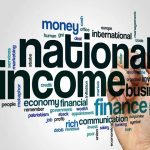Controlling Inflation: A Complex Balancing Act
Inflation, the sustained increase in the general price level of goods and services over time, is a persistent economic challenge faced by many countries. While moderate inflation can stimulate economic growth, excessive inflation can erode purchasing power, destabilize markets, and harm overall economic well-being. To maintain a healthy economy, policymakers must carefully manage inflation.
Understanding Inflation
Inflation can be caused by a variety of factors, including:
- Demand-pull inflation: Occurs when aggregate demand exceeds the economy’s capacity to produce goods and services, leading to price increases.
- Cost-push inflation: Occurs when the cost of production increases, leading businesses to raise prices to maintain profit margins.
- Built-in inflation: Occurs when expectations of future inflation lead people to demand higher wages and prices, creating a self-fulfilling prophecy.
Strategies to Control Inflation
-
Monetary Policy:
- Interest Rate Adjustments: The central bank can raise interest rates to make borrowing more expensive, reducing aggregate demand and curbing inflation.
- Open Market Operations: The central bank can buy or sell government bonds to influence the money supply.
- Reserve Requirements: The central bank can adjust the amount of reserves that banks must hold, affecting their lending capacity.
-
Fiscal Policy:
- Government Spending: Reducing government spending can decrease aggregate demand and help control inflation.
- Taxation: Increasing taxes can reduce disposable income and lower consumer spending, helping to curb inflation.
-
Supply-side Policies:
- Deregulation: Reducing government regulations can increase competition and improve efficiency, leading to lower prices.
- Infrastructure Investment: Investing in infrastructure can improve productivity and reduce costs, helping to control inflation.
- Education and Training: Investing in education and training can enhance the skills of the workforce, leading to increased productivity and lower costs.
-
Wage and Price Controls:
- Direct Controls: Governments can impose price ceilings or wage freezes to limit price increases. However, these controls can lead to shortages and distortions in the economy.
- Indirect Controls: Governments can encourage voluntary wage and price restraint through negotiations and guidelines.
Challenges in Controlling Inflation
Controlling inflation is a complex task that requires careful consideration of various factors. Some of the challenges include:
- Time Lags: Monetary and fiscal policies often take time to have their desired effects, making it difficult to respond to changing economic conditions.
- Uncertainty: Economic conditions can be unpredictable, making it difficult to forecast inflation accurately.
- Trade-offs: Policies aimed at controlling inflation may also have unintended consequences, such as slowing economic growth or increasing unemployment.
In conclusion, controlling inflation is a delicate balancing act that requires a combination of monetary, fiscal, and supply-side policies. By carefully managing these policies, governments can maintain price stability and promote economic prosperity.


